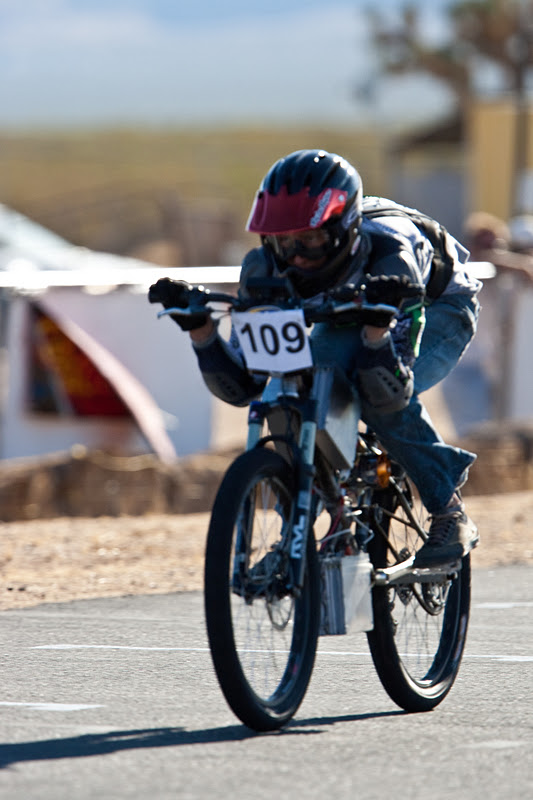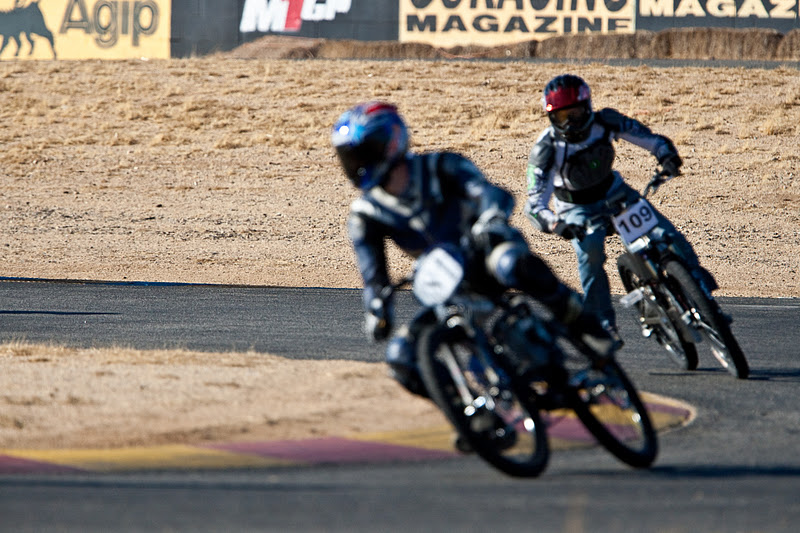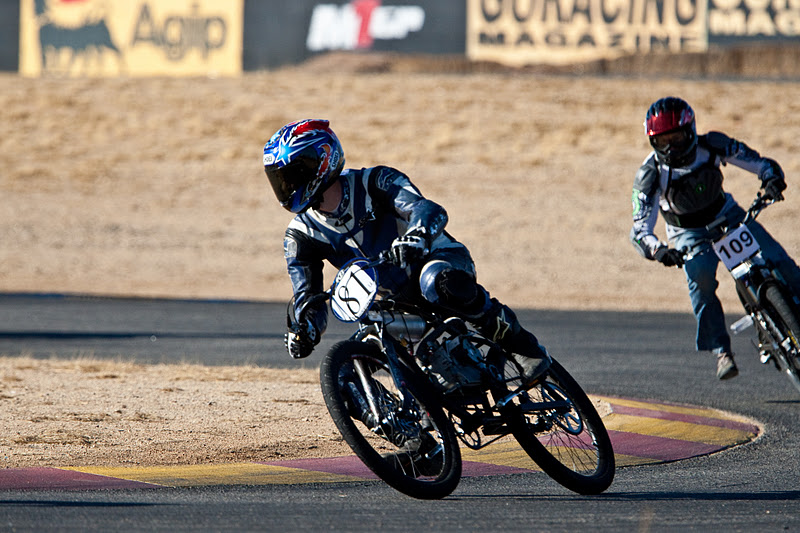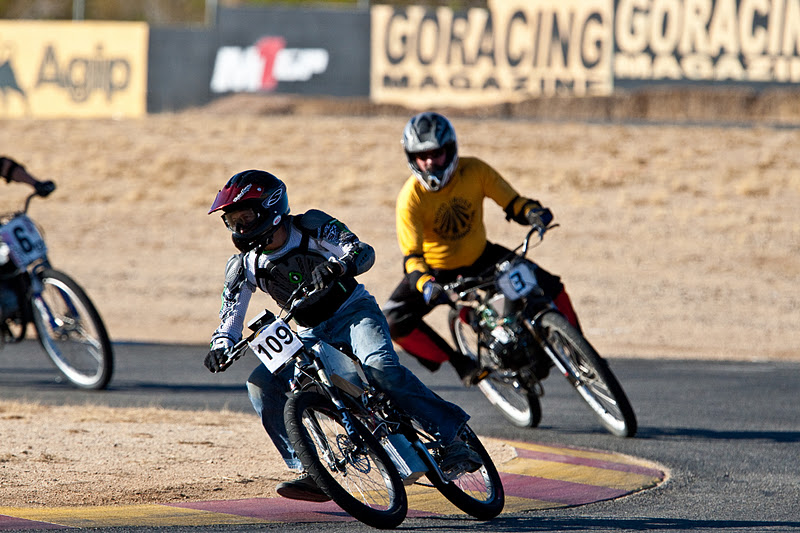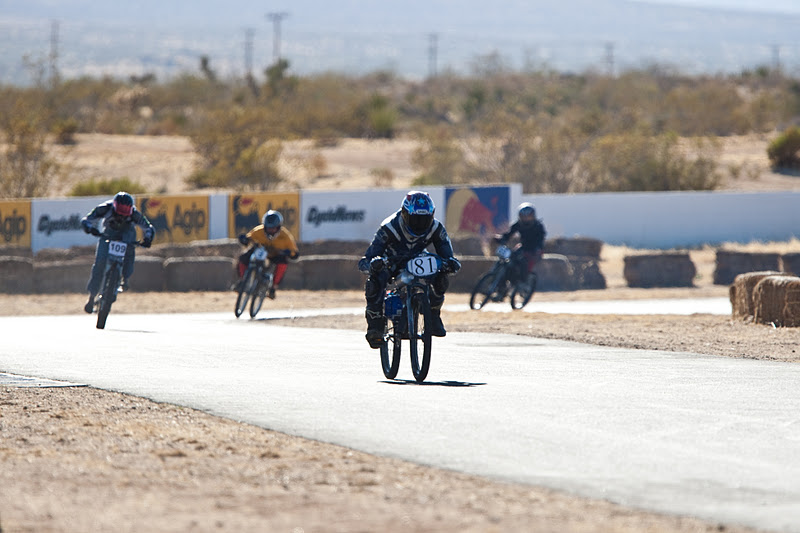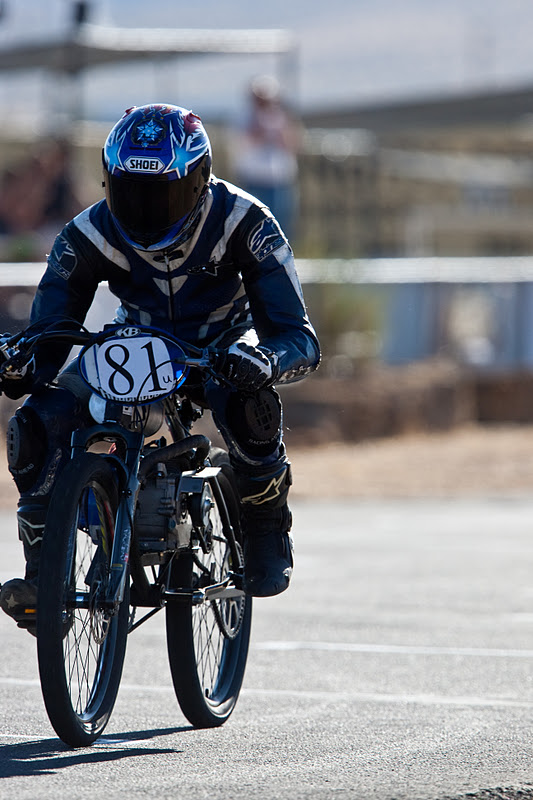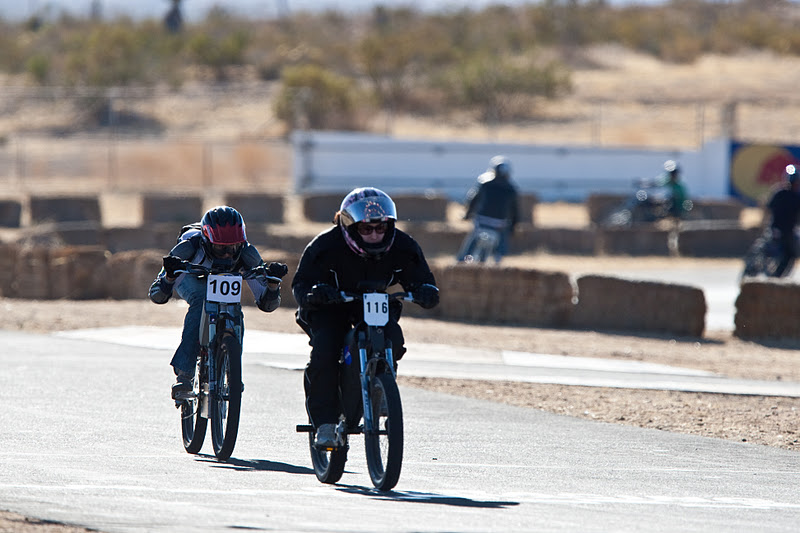SoSauty said:
The T80-100 dominates 49cc Morinis, pulls up close to #74 years of evolutionary advances 49cc 2 stroke, and falls far short of other 85cc motors found somewhere on our planet.
A 49cc Morini can make 9.5hp for the duration of a tank of gasoline. The 80-100 or 3220 can't come close to that (not even 50% of that), and X5 can't even sustain 1hp continuously (as Justin's dyno tests showed). My monster motor was not able to sustain 11hp output on the dyno for a full charge.
The advantage of an electric is the ability to burst higher power levels for a rip down the straight, or a burst off the corner, and then cool down while braking and carving, hopefully, if everything is right, it's able to maintain temp equilibrium and not melt.
Gasoline engines (particularly the water cooled ones) can output the peak power they make for as long as you need to make it. The disadvantage is that you don't get to burst higher power levels, and your power band is generally pretty narrow.
SoSauty said:
Jimminee, take it easy Luke, you miss the point of causual conversation. When I look at power being transmitted along the lines, there's 100s of 1000s of volts since the wires can't handle the amp heat. It gets stepped down to lower voltage at the transformer station, then again at the transformer on the pole before it goes to the house as lowly 120V/180A. It's why a well pump generally needs 220/240V if it's down deep. Lay electrical stuff is "copper wire can handle more voltage less amp" at any a given power level.
Yes, you can minimize power transmission losses and reduce cost of cabling for power transmission by using higher voltages. Duh.
This 100% has NOTHING to do with motors and operating voltages. We've had about 50 threads on this by now, it would do you good to learn about how a motor works, and realize why 20v and 200amps or 20amps and 200v performs
exactly the same way, one just needs to have 10x the number of turns, and one needs to have 10x larger phase leads (both ending up with identical copper fill in the slot). The motor performance is identical, the heat production is identical, the torque is identical, the torque per amount of heat is identical, the power per unit of heat is identical.
What you're trying to tell the poor fools who might take you seriously is exactly what Safe tried to make a bunch of comical graphs and charts about, it's like chasing over-unity.
If you want more continuous power capability from a given motor, you need to increase the operating RPM (assuming you weren't all ready maxed out).
I'm giving you a hard time on this, because you went behind our backs to talk to BiMoPed and tell him what you personally thought everybodys electric bike was making for power and how you would class them. Yet, I don't ever remember being asked anything, you just looked at pictures or datasheets or whatever (which tells you NOTHING of what power levels a person is using, a "10kw" motor can be used at 1kw or 30kw, and in my case it couldn't on the dyno, and at sub 3,000rpm couldn't even sustain 7hp).
It felt to me like back-stabbing behind the scenes, you should ask the people who's setup you're trying to rat on, or if you're completely clueless about how a motor works, say, "I don't know."



